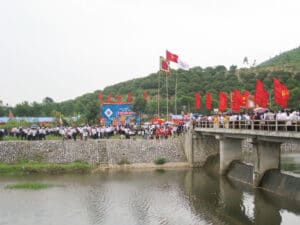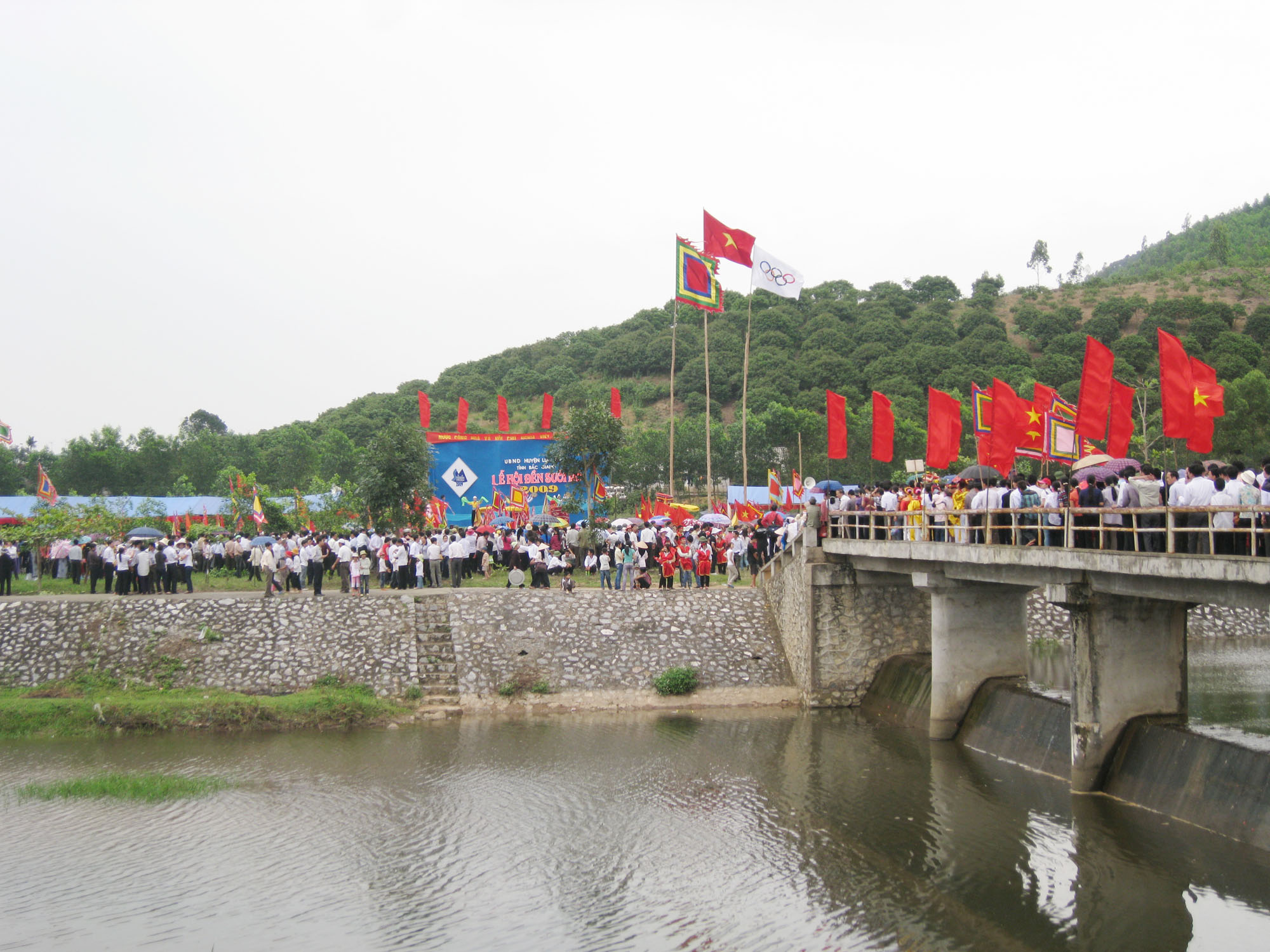Introduction of Changjiang Ancient Citadel

Changjiang Ancient Citadel
Bac Giang is an ancient land with a historical tradition associated with the whole country during the process of building and defending the country.
Xuong Giang ancient citadel is located in Xuong Giang commune, Bac Giang city, Bac Giang province. Xuong Giang is the name of the ancient citadel built by the Ming army in the 15th century (1407). The citadel was built of earth, the remaining vestiges show that it is rectangular, the length in the East – West direction is 600m, the width in the North – South direction is 450m, the area is 27ha, the wall is high and thick, the four corners are filled with earth. surrounded by a fortress, a wide moat, with 4 doors open, the main door looking to the west.
The actual survey and relic records show that there are not many vestiges of the ancient citadel remaining, the wall is about 3-4m higher than the field, the foot is 25m wide, the face is 16-20m wide, and the four corners have 4 fortresses. 4m higher than the wall, protruding out completely, outside the wall is a system of surrounding moats.
During the first excavation in 2008, archaeologists from the Institute of Archeology made an initial sketch of the system of architectural works of Xuong Giang ancient citadel.
According to history books, the Xuong Giang victory of Dai Viet army and people led by Le Loi, smashed 10 thousand Ming invaders in nearly 1 month in present-day Lang Son and Bac Giang. With four big victories: the 10/10 battle smashed the vanguard and slashed to death Crown Prince Lieu Thang at Chi Lang gate; The battle on October 15th defeated the enemy at Can Tram (Huong Son-Lang Giang), forcing enemy general Bao Dinh Ba Luong Minh to commit suicide; The battle of Ho Cat on October 18 (belongs to Lime, Xuong Lam, Phi Mo – Lang Giang), caused the chief minister Ly Khanh to commit suicide and the battle of Xuong Giang on November 3, 1427 took place in the field of Xuong Giang (belongs to the province of Lang Giang). communes of Tan Dinh, Xuan Huong, My Thai, Lang Giang and Tho Xuong districts, Bac Giang city) after 10 days of siege, the insurgent army defeated more than 70,000 enemy troops led by Thoi Tu and Hoang Phuc, forcing the Ming army to in Dong Do (Hanoi) had to ask for goods to be withdrawn back home.
The victory of Lam Son – Le Loi insurgent army, led by General Tran Nguyen Han, captured Xuong Giang citadel and destroyed Lieu Thang’s army, making an important contribution to the historic victory and overthrowing the tyrannical rule of The Ming Dynasty lasted 20 years and was a decisive victory for our nation’s independence in the 15th century.
The siege of Lam Son insurgent army on September 28, 1427 and the glorious destruction of the hospital on November 3, 1427 that Le Quy Don assessed: From the Tran dynasty, Tich Le Co and O Ma Nhi were captured until then, The South country won against the Northern invaders, but there was no such big battle (according to Dai Viet Thong History).
Xuong Giang citadel was considered as the center of the battle and later also witnessed many important events of the homeland, especially the uprising under the leadership of Nguyen Huu Cau (He District) occurred in the second half. 18th century.
To celebrate the history of victory of Lam Son insurgent army in Xuong Giang citadel, Bac Giang province annually holds a festival on January 6-7. During the festival, there are many special rituals and fun activities. Before the opening day of the festival, on the evening of January 5, the youth organized a campfire. At communal houses, pagodas, temples, shrines and cultural houses, lights and torches all night until the next day’s watch to arrange their ranks, gongs and drums pull to the opening of the festival. In the early morning of the 6th day of the first lunar month, groups of people from the wards and communes, raising flags, sounding drums, and palanquins with colorful and well-dressed clothes from the streets turn towards the center of the festival.
With that historical significance, on January 22, 2009, the Ministry of Culture, Sports and Tourism issued Decision No. 293/QD-BVHTT-DL ranking Xuong Giang citadel as a historical relic of the Xuong Giang victory. Nation. There are 14 relic sites here: the northeast gate, the east gate, the north gate, the southwest gate, the south gate, the central area, traces of the citadel, the section of the Xuong Giang river flowing through the citadel; Archaeological excavation sites number 2, 3, Phu well, Thanh temple and 2 points outside the protected area are: southeast gate, west gate. Protected relic sites are scattered in alternate locations as residential areas in Dong Giang, Nam Giang and Trai Bac villages of Xuong Giang commune. There is also an area of the Intermediate School of Culture – Sports and Tourism, the Plant Protection Department of Bac Giang province…
With the values that have been recognized in history, the consensus of all levels, branches and people, the historical site of the Xuong Giang victory site will forever be the pride of the people of Bac Giang in particular, the nation and the nation. Vietnam in general has a heroic history against foreign invaders of the country.
Source: Collected internet.
